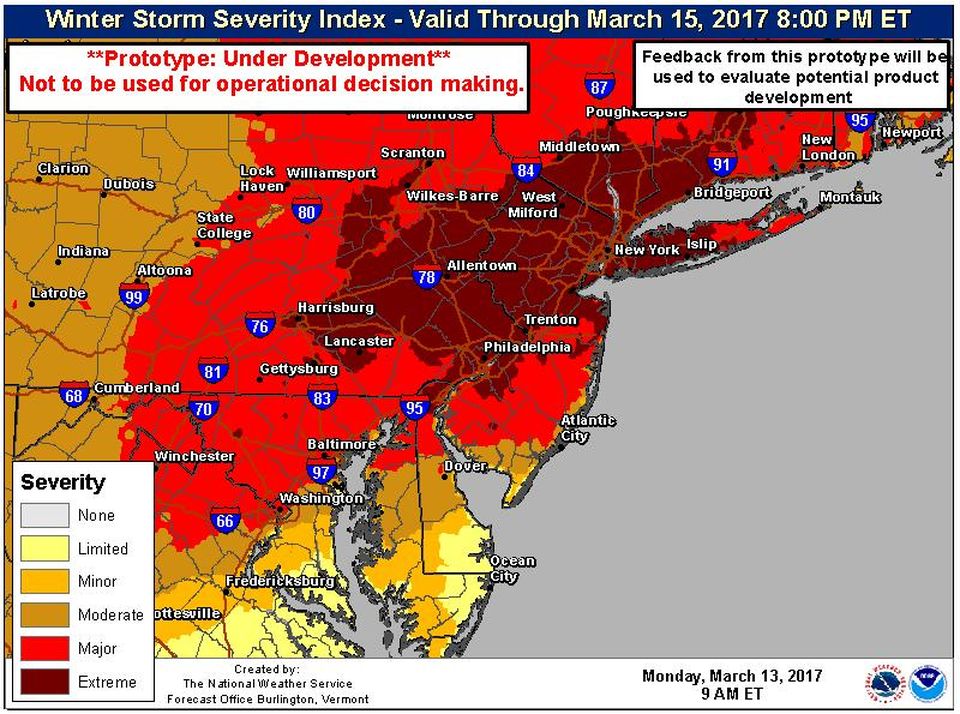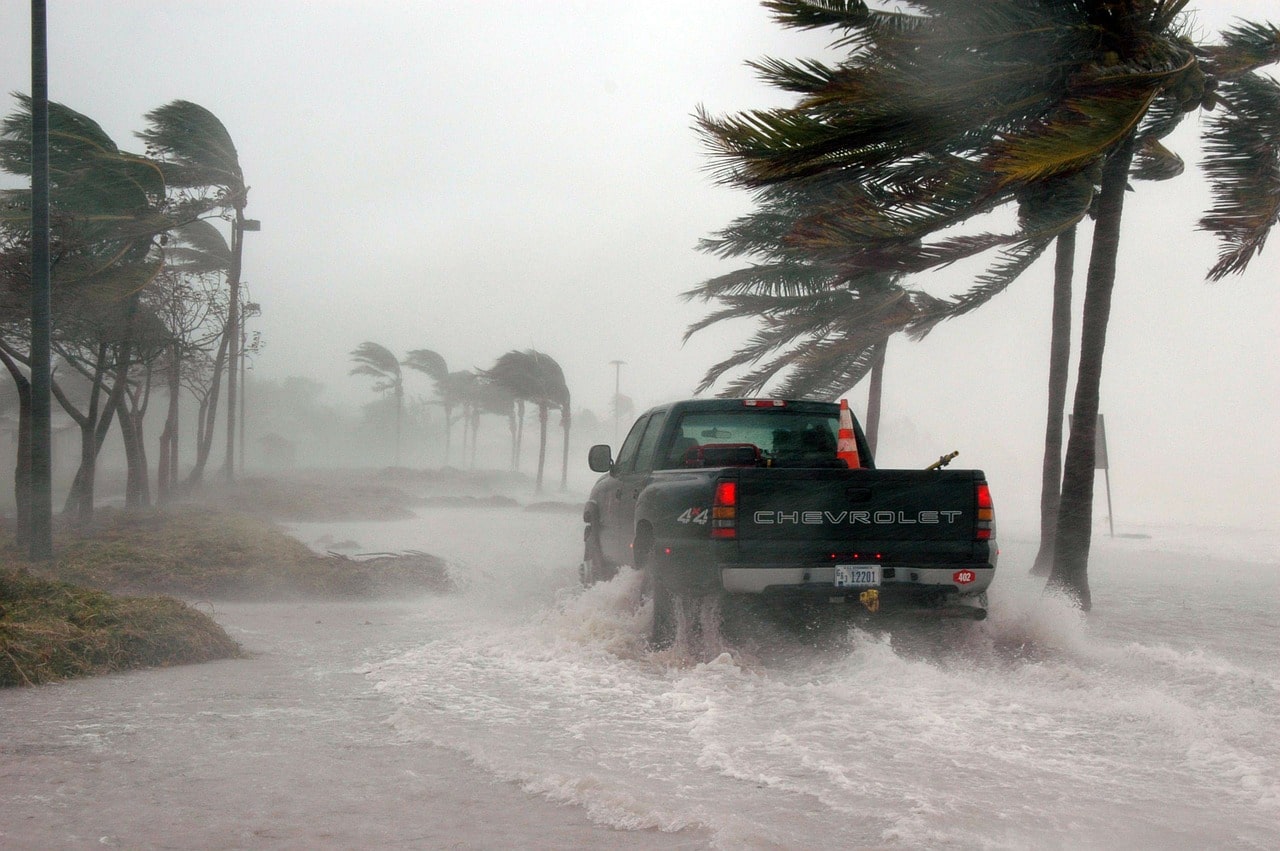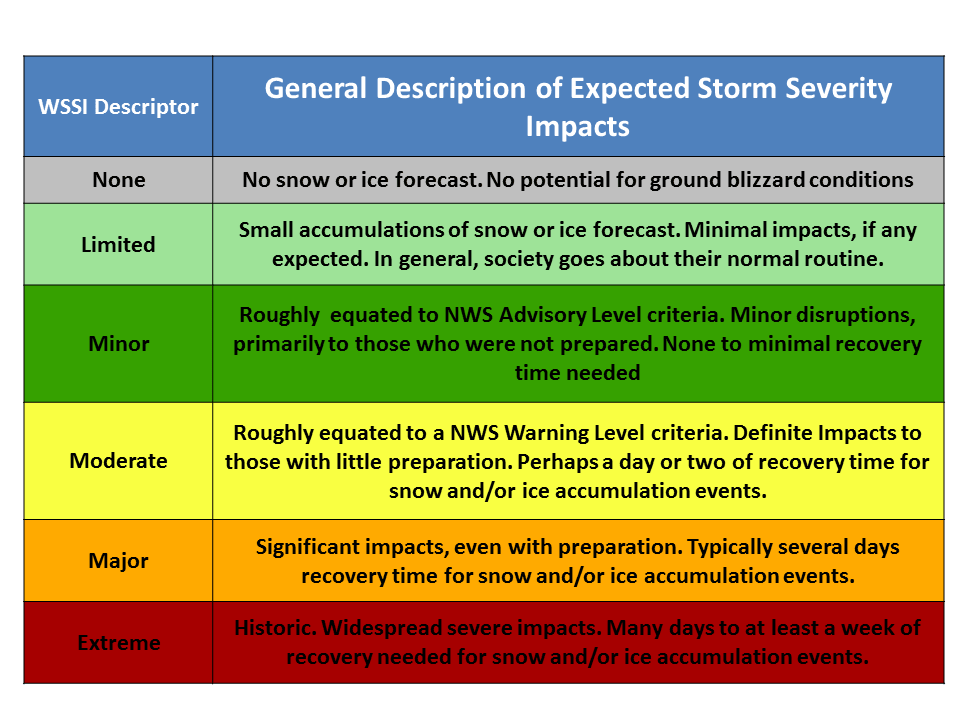
The National Weather Service is developing a new and more detailed way to predict the severity of winter storms. The Winter Storm Severity Index (WSSI) is designed to predict the significance of societal impacts from a winter storm. Rather than basing a forecast off snow totals alone, this index will now take into account snow, ice, wind, temperatures, location, and population. This will allow forecasters, emergency management, and the general public to properly prepare for significant weather-related impacts.
The WSSI is comprised of six elements that will assist in predicting winter weather impacts. These elements include snow load, snow amount, ice accumulation, blowing snow, flash freeze, and ground blizzard. Additionally, there are five categories that depict the severity of potential impacts: limited, minor, moderate, major and extreme. The “limited” end of the spectrum illustrates minor inconveniences, while the “extreme” end means the highest degree of disruptions to daily life.

Having extensive information regarding extreme weather predictions will assist in preparing for damaging and life-threatening weather events. Such events may involve school/road closures, tree/ powerline damage, and transportation issues. The WSSI will use color scales in order to convey these major threats in forms of graphics and visuals. Using a select range of colors, the maps will show locations expecting limited to extreme degrees of weather impacts.
